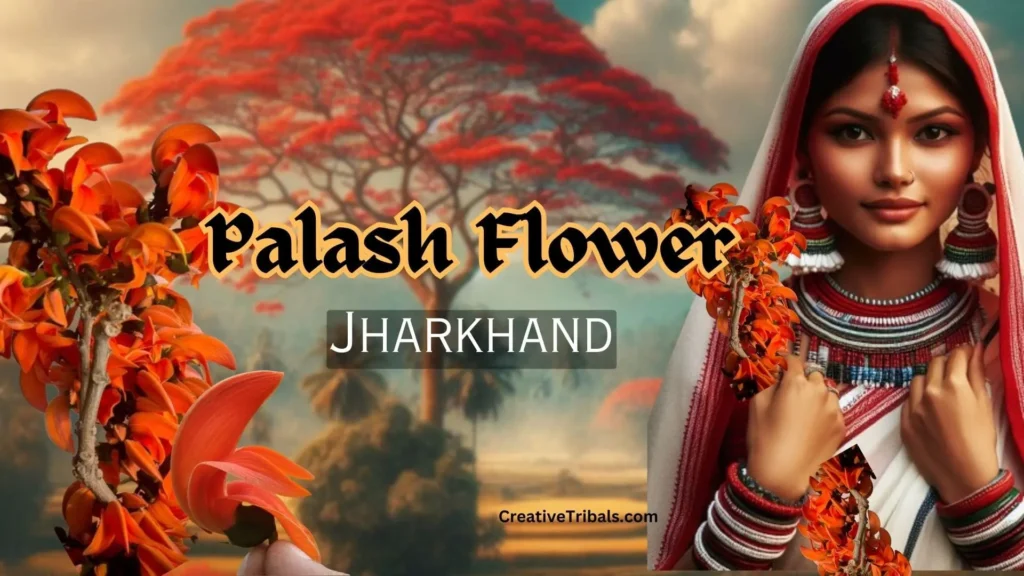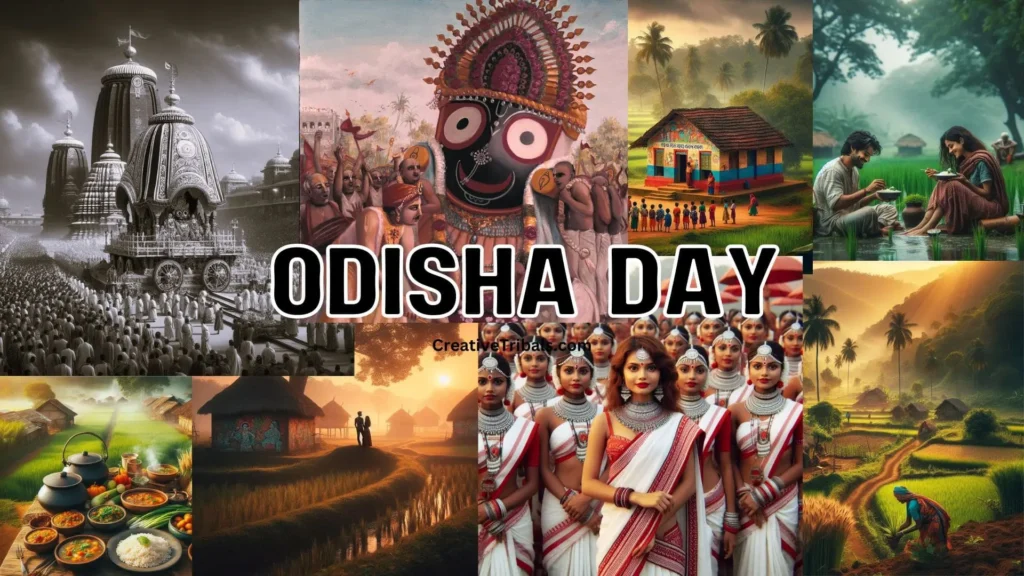Kalahandi, a district nestled in the heart of Odisha, India, is a treasure trove of natural beauty, cultural richness, and agricultural prosperity. Known for its stunning landscapes, vibrant festivals, and skilled artisans, Kalahandi offers a captivating blend of history and modern development. This article explores the many facets of Kalahandi, from its gurgling waterfalls and fertile farmlands to the stories of its resilient farmers and rich artistic traditions.


The Natural Beauty of Kalahandi
Kalahandi is a district of breathtaking natural landscapes, dominated by lush green forests, rolling hills, and scenic waterfalls. The towering mountains, with the sky appearing like a backdrop, create a surreal panorama that attracts many tourists. Among the most captivating features of Kalahandi are its waterfalls, which flow through the rugged terrain, enchanting visitors with their melodic sounds and picturesque views.
One of the most significant rivers flowing through Kalahandi is the Indravati River, which is often referred to as the lifeline of the district. Originating near a small tribal village, this river has a profound impact on the region’s agriculture and is crucial for the district’s irrigation system. The river plays a pivotal role in paddy cultivation, with irrigation facilities developed in the 1990s transforming the district’s agricultural landscape.
The district is also home to the Ravana Bhakt, a stunning waterfall that offers a tranquil and scenic environment. The beauty of this location is further enhanced by the natural surroundings, making it an ideal spot for nature lovers.
Art and Culture: The Soul of Kalahandi
Kalahandi is renowned not only for its natural beauty but also for its rich cultural heritage. The district has long been associated with art, and its skilled artisans are celebrated for their mastery in crafting intricate designs from materials like wood. These artisans, many of whom belong to tribal communities, carry forward the legacy of traditional art forms that have been passed down through generations.
One of the district’s most famous art forms is the Kalahandi Cotton Weaving, a traditional craft that highlights the weavers’ delicate skill in creating exquisite sarees. The handwoven fabrics produced in Kalahandi are prized for their detailed patterns and high quality, reflecting the weavers’ artistic finesse.
The district also holds a strong connection to Maa Manikeshwari, the presiding deity of Kalahandi. The Chhatar Yatra is one of the most significant festivals celebrated in her honor. During this grand festival, the goddess’s sacred umbrella is carried through the streets of Bhawanipatna, drawing millions of devotees from all corners of Odisha and beyond. The festival, celebrated during Dussehra, is a vibrant expression of Kalahandi’s cultural and religious devotion.
The traditional art forms of Kalahandi district reflect a rich cultural tapestry, deeply embedded in the local festivals, social celebrations, and religious occasions. Here’s a summary of the folk dance and theatrical traditions:
Folk Dance Traditions Kalahandi
- Ghumura: A vibrant, rhythmic dance performed during major festivals like Nuakhai and Dushara, involving 18-20 performers in colorful costumes.
- Bajashal: A mixed-gender dance from Bhawanipatna and Kesinga, performed at weddings and gatherings, featuring instruments like the Nishan, Dhol, and Tasa.
- Banabadi: Performed by men of the Yadav community with intricate stick movements during festivals like Dola and Chaitra Purnima.
- Singh Baja: A musical performance featuring the Singa (horn) and drums, popular at weddings in Bhawanipatna, Lanjigarh, and Koksara.
- Madli: Associated with agricultural festivals, this is performed by the Gand tribe and is a social, energetic dance.
- Dandari: A folk dance with small sticks, telling stories from Krishna Lila, especially during Holi and Janmashtami.
- Paik Akhada: A martial dance performed by the Paik tribe, showcasing heroic themes, especially during Dushara.
- Ghodel: A male-only dance reminiscent of the Ranapa dance from coastal Odisha, common during Dushara.
- Podmara: A dance performed by the Kandh tribe during Chait Purnima, accompanied by unique instruments like the Dhap and Pod Singa.


II. Musical and Theatrical Art Forms
- Salap Nishan: A drum-based performance by the Khandh tribe during festivals like Nuakhai, creating a powerful soundscape.
- Dhap: A lively courtship dance performed by men and women, reliant on the Dhap drum for rhythm.
- Suanga: A traditional folk theatre drawn from mythology and epics, performed for 6-8 hours, popular in Junagarh and Jaipatna.
- Baria: An interactive lyrical tradition featuring unmarried girls in Kesinga and Narla, with question-answer sessions.
- Sankha Vadya: A conch-shell musical performance at auspicious events.
- Ghanta Vadya: A bell-ringing performance during important social and religious occasions.
- Sankirtan: A devotional musical tradition involving up to 30 performers, creating an atmosphere of devotion with instruments like the Khol and Gini.
- Palla: A narrative performance where stories from mythology are recited by six performers, common in Bhawanipatna and Dharamgarh.
- Daskathia: A two-person narrative performance recounting historical or mythological tales.
- Rahas: A dramatic portrayal of Krishna Lila performed by both men and women during festivals like Rahas Purnima.
These art forms highlight the deep connection between Kalahandi’s traditions and its religious, agricultural, and social life.
you can explore detailed resources and studies on these traditional art forms through academic websites, cultural heritage blogs, or tourism-related portals about Odisha. For more scholarly information, you can check repositories like:
Google Scholar – Search for research papers on Kalahandi’s folk traditions and art forms. Google Scholar
Odisha Tourism Official Website – Provides insights on traditional art forms of different districts, including Kalahandi. Odisha Tourism
Cultural Research Institutions – Websites of Indian cultural institutions like IGNCA or SNA, which document traditional art forms. Indira Gandhi National Centre for the Arts Sangeet Natak Akademi
Festivals and Traditions of Kalahandi
Kalahandi’s festivals are deeply rooted in its agricultural and religious traditions. The district’s farmers celebrate the Festival on the Dashami day of Bhadra Shukla Paksha. This festival marks the offering of the first harvest to Maa Ishwari, the goddess worshipped by the local community. After offering their crops to the goddess, the farmers then partake in their harvest, signifying the close bond between the people of Kalahandi and their land.
The Chhatar Yatra, held during Dussehra, is the largest festival in Kalahandi, attracting thousands of devotees from across the state. The celebration is a vibrant display of local customs, with processions, music, and dance creating an atmosphere of joy and devotion. The festival reflects the deep cultural connection between the people of Kalahandi and their spiritual heritage.
Kalahandi: A Hub of Agricultural Development
While Kalahandi was once known for its struggles with drought and famine, today, it has emerged as a district of agricultural success. Thanks to the development of irrigation projects like the Indravati Dam, the district has become one of Odisha’s leading producers of paddy. Today, Kalahandi is referred to as the “Rice Bowl” of Odisha, producing nearly 7 lakh tons of paddy annually.
The success of agriculture in Kalahandi does not stop with paddy. The district is also known for its cotton cultivation, which began as an experimental venture in 1984. With the district’s black soil providing favorable conditions for cotton farming, the crop has flourished, leading to the establishment of ginning factories to process the cotton and make it market-ready. Around 55,000 hectares of land are currently dedicated to cotton cultivation, making it a crucial part of Kalahandi’s agricultural economy.
Other important crops grown in Kalahandi include onion, maize, and pulses. Onion cultivation is particularly significant, with farmers producing around 8 lakh tons annually. However, the lack of proper market systems sometimes forces farmers to sell their produce at low prices. To address this issue, the government is encouraging the establishment of onion conservation houses, where onions can be stored for several months, allowing farmers to sell them when prices are more favorable.
Empowering Farmers Through Innovation
The resilience and innovation of Kalahandi’s farmers are evident in the district’s growing agricultural success. Over the past few decades, local farmers have embraced modern farming techniques, including drip irrigation, the mulching method, and sustainable crop management practices. These techniques have significantly increased yields and reduced the need for chemical fertilizers, contributing to the production of high-quality, organic produce.
One inspiring example is Lopamudra Sahajal, a farmer from Ghar La village, who has successfully adopted modern farming methods to cultivate vegetables like tomatoes, cabbages, and broccoli. Through careful management and the use of advanced irrigation systems, Lopamudra has managed to triple her output, earning a substantial income from her land. Her success story is just one of many in Kalahandi, where farmers are achieving remarkable results by blending traditional knowledge with modern innovation.
Tourism and Sightseeing in Kalahandi
Tourism in Kalahandi is steadily growing, thanks to its natural beauty and cultural richness. The district offers a wide range of attractions, from its pristine waterfalls to historical sites that date back to the pre-independence era.
One of the most popular tourist destinations in Kalahandi is Dokri Chhada, a scenic spot surrounded by dense forests, rock formations, and waterfalls. Visitors can explore the four waterfalls in the area, each with its own unique charm. The most prominent of these is Bhairav Falls, which drops 75 feet into a serene pool below. The rugged terrain and the unspoiled beauty of Dokri Chhada make it a favorite destination for adventure seekers and nature enthusiasts alike.
Another must-visit site in Kalahandi is Halo Point, a stunning vantage point offering panoramic views of the surrounding landscape. The point is named after its ability to receive mobile signals, making it a popular stop for travelers. From Halo Point, visitors can gaze out over the vast expanse of the Indravati Dam Reservoir, a man-made lake that has become a focal point for local tourism. Every year, a boating competition is organized by the district administration to promote the area’s tourism potential.
Here’s a detailed guide to the places of interest in Kalahandi, highlighting their natural beauty, historical significance, and religious importance:
1. Dokarichanchara
Dokarichanchara is a scenic location on the border of Kalahandi and Nabarangpur. It features two impressive waterfalls: Dokaridara (200 ft high) and Bhanyaraghumara (150 ft high). These waterfalls are surrounded by hills like Yogi Pahad and Rani Pahad. The Gudahandi Caves, known for their ancient pictographic inscriptions, further enhance the historical value of the area.
2. Phurlijharan
Phurlijharan, just 15 km from Bhawanipatna, offers a beautiful 30 ft waterfall surrounded by evergreen forests. It is well-known for the colorful rainbows that appear when sunlight hits the scattered water particles, making it a favorite picnic destination.
3. Gudahandi
The Gudahandi Hills, near Khaligarh village, feature several caves that contain pictographic paintings dating back to prehistoric times. These caves are thought to be connected to the Indus Valley Civilization and provide significant insight into early human habitation in Odisha.
4. Amathguda
Amathguda is a ruined fort located along the Tel River. It was of strategic importance in ancient times, but a 1977 flood damaged a nearby bridge. The remnants of the fort offer a glimpse into its historical significance as a protective site.
5. Asurgarh
The village of Asurgarh is known for the remains of its ancient fort, believed to be linked to local legends of demon kings. The fort has four entrances, each dedicated to different deities, and is situated near a large tank and the Sandul River.
6. Ampani
Located 77 km from Bhawanipatna, the Ampani Hills provide stunning panoramic views of nature. The Haladigundi Valley creates an optical illusion where objects appear yellow during certain times of day. The area is also home to wildlife, including black panthers, spotted deer, and sambar.
7. Belkhandi
Belkhandi sits at the confluence of the Tel and Uttei Rivers and is notable for its religious and archaeological significance. Excavated ruins from the 12th century, including sculptures like Sapta Matruka and Uma Maheswar, can be found here. It’s an excellent site for a peaceful outing.
8. Junagarh
Once the capital of Kalahandi, Junagarh has well-preserved forts and temples featuring Oriya inscriptions. The area has historical significance, including remnants of the Sati Rite, a practice that was later abolished under British rule.
9. Karlapat
A quiet village, Karlapat is home to the Khandual Waterfall and the Manikeswari Temple. The waterfall once powered a local mill, and the village continues to be a place of religious importance.
10. Mohangiri
Located near Madanpur Rampur, Mohangiri features an ancient Shiva Temple with inscriptions and records. It is set near the Kali Ganga stream and provides a historical look into early religious practices in the region.
11. Rabandhara
Just 12.8 km from Bhawanipatna, Rabandhara is known for its tranquil waterfall set within a mountain gorge. The area offers a variety of landscapes, from mountains to forests, making it a peaceful picnic spot despite its difficult accessibility.
For more information on these sites, you can visit blogs like Incredible Kalahandi or explore official tourism websites of Odisha to plan your visit.
FAQs
What makes Kalahandi famous?
Kalahandi is famous for its rich art and culture, skilled artisans, and agricultural success, particularly in cotton and paddy cultivation. The district is also known for its scenic waterfalls and vibrant festivals.
How has irrigation transformed agriculture in Kalahandi?
The development of irrigation projects like the Indravati Dam has significantly improved farming in Kalahandi, allowing for two crops to be grown annually and making the district one of Odisha’s leading paddy producers.
What are the main crops grown in Kalahandi?
The main crops grown in Kalahandi include paddy, cotton, onions, maize, and pulses. The district is particularly known for its cotton cultivation, which began in the 1980s.
What is the significance of Maa Manikeshwari in Kalahandi?
Maa Manikeshwari is the presiding deity of Kalahandi and is worshipped by the local population. Her biggest festival, the Chhat Par Yatra, is celebrated during Dussehra with grand processions and rituals.
What are some tourist attractions in Kalahandi?
Some of the main tourist attractions in Kalahandi include the Dokri Chhada waterfalls, the Indravati Dam Reservoir, and Halo Point. These locations offer breathtaking natural beauty and opportunities for adventure tourism.
How has modern farming benefited Kalahandi’s farmers?
Modern farming techniques such as drip irrigation, mulching, and organic farming have greatly benefited farmers in Kalahandi by increasing yields, improving soil quality, and reducing costs.



